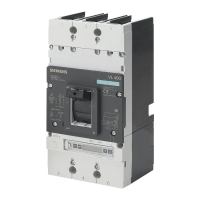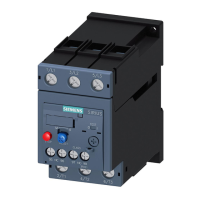Product description
3.3 Configuration
3VL IEC molded case circuit breakers
System Manual, 11/2013, 110 0110 - 02 DS 03
23
VL160 to VL630 molded case circuit breakers
The arrangement of current paths, contact configuration and switch mechanism of the VL160
to VL630 molded case circuit breakers corresponds to that of the VL160X molded case
circuit breaker. The designs diverge with regard to the overcurrent release.
● The overcurrent releases are available in a thermal-magnetic version and in an electronic
version.
● Thermal-magnetic overcurrent releases are available with adjustable overload releases
and short-circuit releases.
VL800 to VL1600 molded case circuit breakers
The arrangement of the current paths and switch mechanisms is identical to that of the
VL160X to VL630 molded case circuit breakers.
However, the VL800 to VL1600 molded case circuit breakers are only available in the
version with electronic trip unit. As with all electronic trip units for the SENTRON VL molded
case circuit breakers from Siemens, the current transformers (one per phase) are
accommodated within the overcurrent release enclosure.
All 3VL molded case circuit breakers with electronic trip units measure the actual RMS
current. This method is the most accurate way of measuring currents in electrical distribution
systems with extremely high harmonics.
Thermal-magnetic overcurrent trip units
A thermal-magnetic overcurrent release consists of two components - a thermal release for
protecting against overload, and a magnetic release for protecting against short-circuit. Both
release components are series-connected.
The thermal release consists of a temperature-dependent bimetal that heats up as a result of
the flow of current. This means the release is current-dependent. The heating of the bimetal
strip depends on the ambient temperature of the molded case circuit breaker. All current
values specified for 3VL for thermal-magnetic releases refer to an ambient temperature of 40
°C. Where ambient temperatures deviate from this, the values in the tables in the chapter
Use at altitudes above 2000 meters (Page 142) are to be used.

